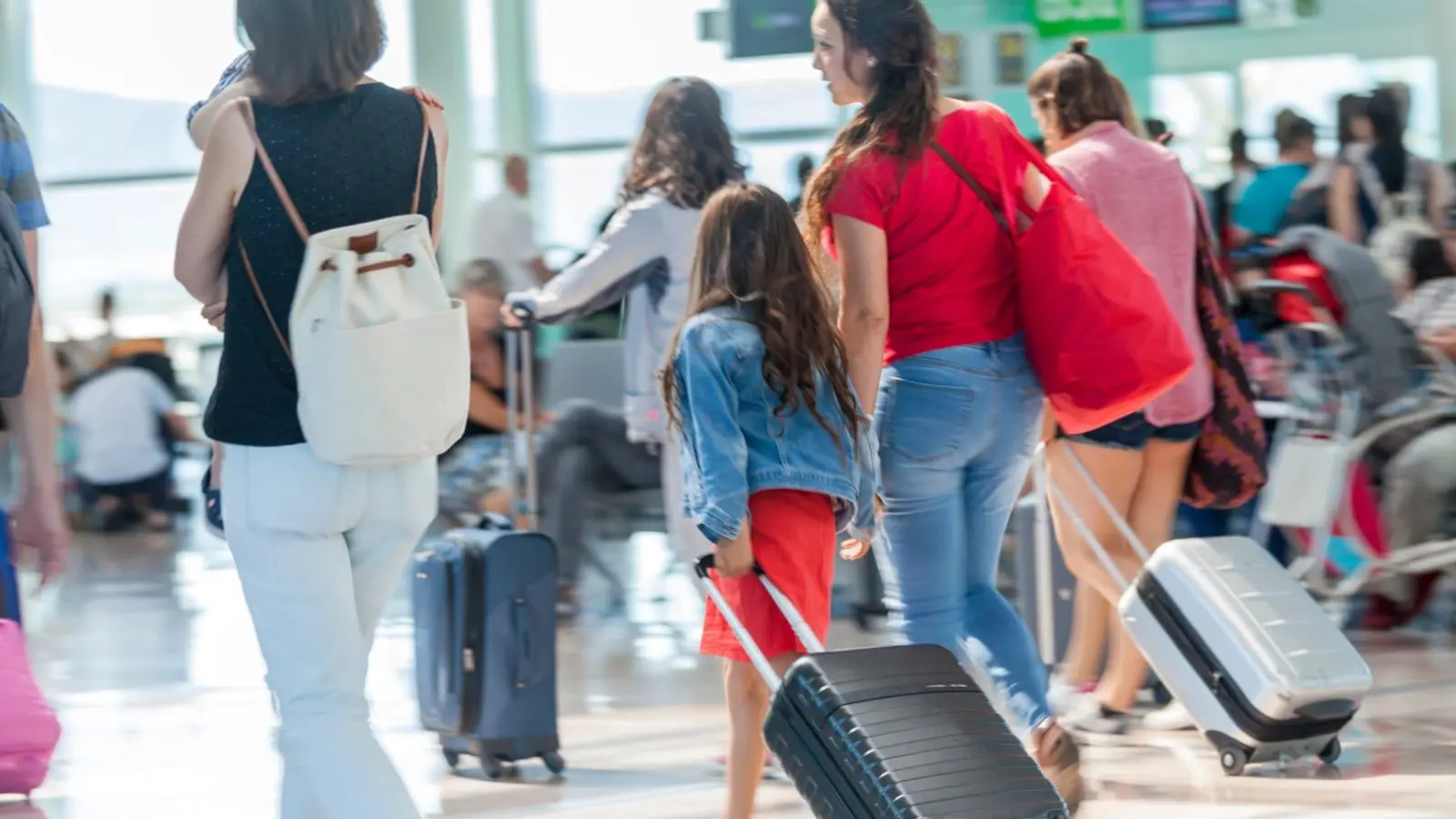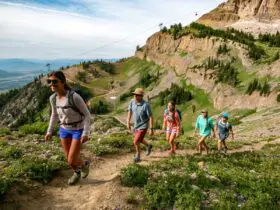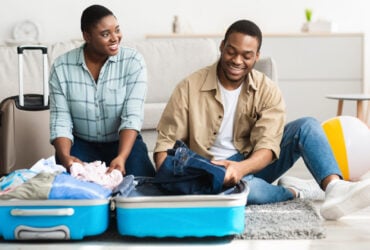Fitting all of your travel necessities into a carry-on suitcase could easily qualify as an Olympic event. When you’re considering how to pack a carry on, remember you’ll need talent, tenacity, and practice to get it just right.
I’m a frequent traveler and I’ve honed my carry-on strategy to a gold-medal-winning level. Here are my top tips to put you on the fast track to the top of the carry-on packing winner’s podium. From space-saving tools to clothes that won’t wrinkle no matter how hard you try, these tips will ensure your suitcase actually zips with room to spare. You might even have room leftover for a few souvenirs, no checked luggage necessary.
WHAT TO PACK: 10 Essentials for Your Carry-on Bag
Make a Packing List
Before you even pull your suitcase out of the closet, you’ll need to make a list. At the top of the list, put the number of days you’ll be gone and note what the weather will be like on each day, along with any weather of note (rain, snow, etc.). Your packing list will look a lot different if you’re planning a beach vacation than if you’ll be hiking or skiing all week.
Remember that there’s only so much room in a carry-on suitcase and a little pre-planning can stop overpacking before it starts. If you pack strategically, it’s usually doable to fit a week’s worth of necessities in a carry-on. Very little in your suitcase should be single use; to make the most of your very limited space, make every item do double (or triple) duty in different outfits on different days (more on this below).
Bonus: You can keep the packing list and use an adjusted version of it for your next trip.
Roll vs. Fold
Everyone has their preferred packing method, but in my experience, tightly rolling clothes before packing them into a carry-on has some advantages over folding. Rolling saves the most space and cuts down on lines and creases in clothes. The downside of this method is items that wrinkle easily may need to be ironed when you arrive at your destination. It’s a small price to pay, though, for the extra amount you can fit.
PACK FOR ADVENTURE: 11 Family Road Trip Ideas Every Family Will Love
Use Packing Cubes
If you’ve never used packing cubes before, your packing world is about to get completely turned upside down. Packing cubes come in a variety of shapes and sizes to fit clothing, shoes, and other items so you can keep everything separate and organized. They also offer light compression—you’ll be shocked at how many items you can fit into one packing cube. They also come in handy for unpacking your carry-on when you arrive at your destination. Simply transfer your cubes to the dresser drawers in your hotel room and you’re good to go.
If you want to take it a step further, you might consider travel compression bags. To use them, you put your clothing in a plastic bag and then roll the air out (or use a vacuum to suck all the air out). This is a kind of extreme option, and it seriously wrinkles clothing, but it’s very effective at allowing you to fit a ton of stuff into a carry-on suitcase.
Pack Items That Do Double Duty
Packing a carry-on suitcase is all about saving space. One of the easiest ways to make more room in your suitcase is to pack less clothing. Look for items that can be worn more than once or serve multiple purposes. To keep clothing fresh over multiple wears, wear a good anti-perspirant/dedorant, pack a stain-remover stick or wipes to spot treat stains, and consider bringing along some laundry soap sheets or a tiny bottle of laundry soap in case you need to wash something in the hotel sink.
Pack Clothing Made from Wrinkle-Free Fabrics
One way to smooth out the issue of wrinkled clothing is to pack items that don’t get wrinkled in the first place. Fabrics like polyester, wool, and spandex are less likely to wrinkle than cotton or linen. Performance fabrics are another great choice for travel, since they’re made to wick moisture and don’t generally wrinkle.
BEACH READY: 10 Sturdy and Stylish Beach Bags
Nest Smaller Items Inside Larger Ones
There’s no way around it: some items can’t be squished or folded to fit neatly in your carry-on, but you can still use them to save precious packing space. For example, when you pack a carry on, you can store small items like undergarments or socks inside your shoes. (If the idea of that freaks you out, put the socks or underwear in a plastic bag first.) While packing, look for any open spaces where you can “nest” items together so you don’t waste an inch of space.
Keep Toiletries To a Minimum
If your hotel has complimentary soap, shampoo, and lotion, you can save a lot of space by leaving these things at home. If you’re traveling somewhere that doesn’t have basic toiletries on hand or you simply can’t leave home without your favorite bath products, pick up miniature versions before your trip. Even better, invest in a set of refillable travel bottles that you can fill as needed with the products you use every day. It’s better for the environment and saves space in your luggage. The TSA restricts carry-ons to a single quart-sized plastic bag filled with individual items in quantities of 3.4 ounces or less.
Common Questions About How to Pack a Carry On
1. What items are allowed and not allowed on airplane?
The TSA has an extensive list of items that are and aren’t allowed on the airplane that’s worth checking if you have an item you’re not sure about. Among the items people have the most questions about are sort-of liquids like toothpaste, honey, and jam. The TSA differentiates between items that are allowed in checked bags and those that can be carried on. In many cases, items that are not allowed in carry-ons are still allowed in checked luggage. There are also a limited number of items that are allowed in carry-ons but not in checked luggage.
HEALTHY TRAVEL: 11 Products to Help You Stay Healthy on Vacation
2. What items are not allowed in checked luggage?
The TSA’s goal in restricting items in checked luggage is safety, which can be a helpful frame as you’re thinking about what you can and can’t pack in checked luggage. Flammable items including butane, CO2 canisters, and plasma lighters are not allowed. It’s always a good idea to check questionable items case-by-case basis, as there are sometimes surprising items you either can or can’t bring in your checked luggage. For instance: E-cigarettes? No. Axes? Yes.
3. What can you pack in your carry-on?
When it comes to thinking about how to pack a carry-on, there are two challenges: what you can fit in the limited room of a carry-on, and what you’re allowed to pack. Items allowed in neither carry-ons nor checked baggage include dangerous substances, and liquids in greater quantities than 3.4 ounces. The best way to fly carry-on only is to make sure you have a downsized toiletries bag with a zip-top quart sized bag that fits all your liquids (shampoo and conditioner, toothpaste, lotions and potions, etc.) that are individually packaged in containers of 3.4 ounces or less.
If that seems unrealistic given your toiletries ambitions or length of stay, you might consider looking into solid versions of items like shampoo, conditioner, and toothpaste to give you larger quantities of key items. Avoiding airline baggage fees and not needing to stand around at the baggage carousel are two key reasons why it’s worth downsizing toiletries in order to go carry-on-only.
A noteworthy exception to the 3.4-ounce carry-on liquid rule is medication and infant or child nourishments. You can bring through any liquid medications you need–just pack the prescription in case security or airline officials need verification of the item. And breastmilk, formula, baby food, and so on can be in “reasonable quantities” in carry-on luggage.
A Final Carry On Pep Talk: You Can Do It!
Traveling light is more doable than you might think. Carry ons push you to embrace the art of packing light and yield nice benefits like skipping the wait at the baggage carousel. The right bag is key, as is a strategic approach to clothing, shoe, and toiletries choices. And remember that you can optimize your personal item as well, traveling with something a little larger to fit anything that doesn’t fit in your carry-on.
The best way to start is to find a small travel bag that meets airline carry-on restrictions and will fit in the overhead bin but still maximizes all available space. Whether you’ve never tried to go carry-on only or you’re an old pro at the carry-on game, there’s never been a better time to travel light. These carryon packing tips will give you a starting place for developing your own carry on travel style. Bon voyage!
More from FamilyVacationist:
- Kids Stay Free at These 10 All-Inclusive Family Resorts
- The Most Comfortable Travel Clothing Brands
- The Best Multipurpose Travel Clothes













